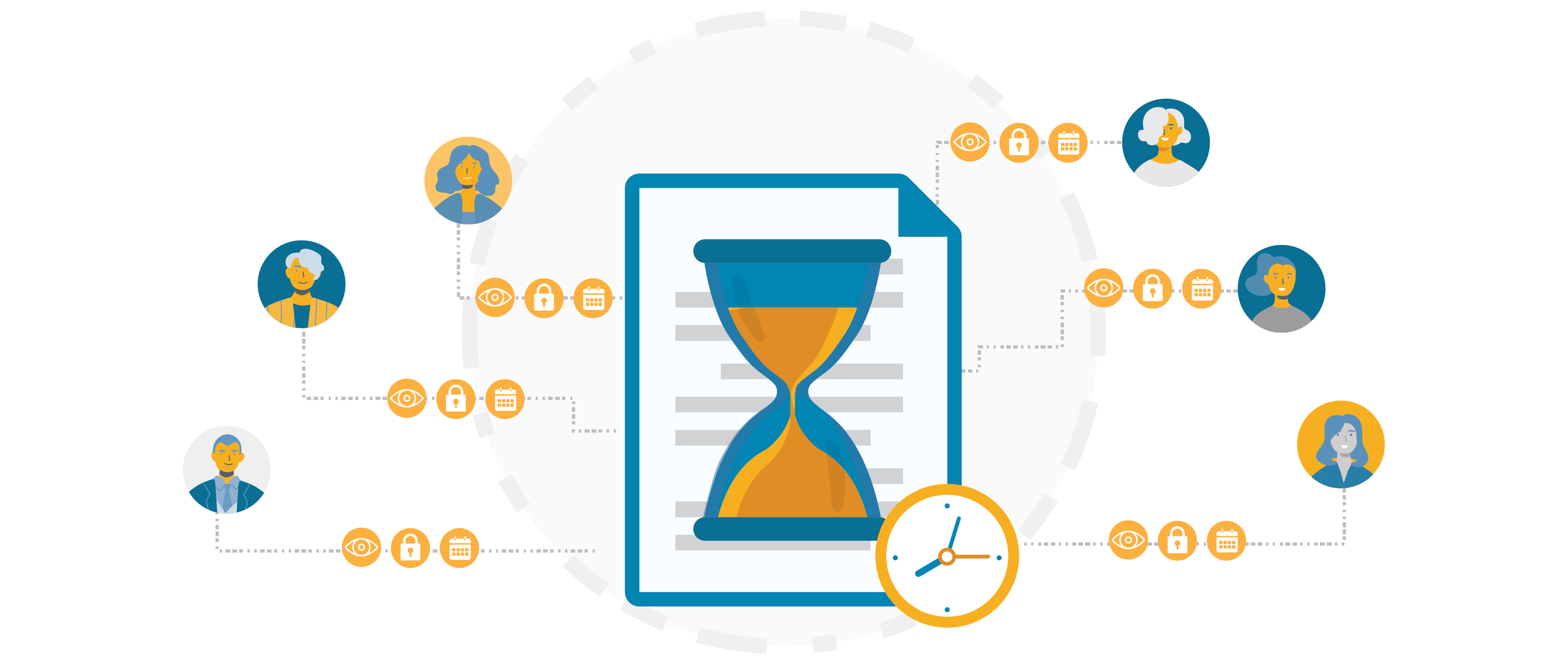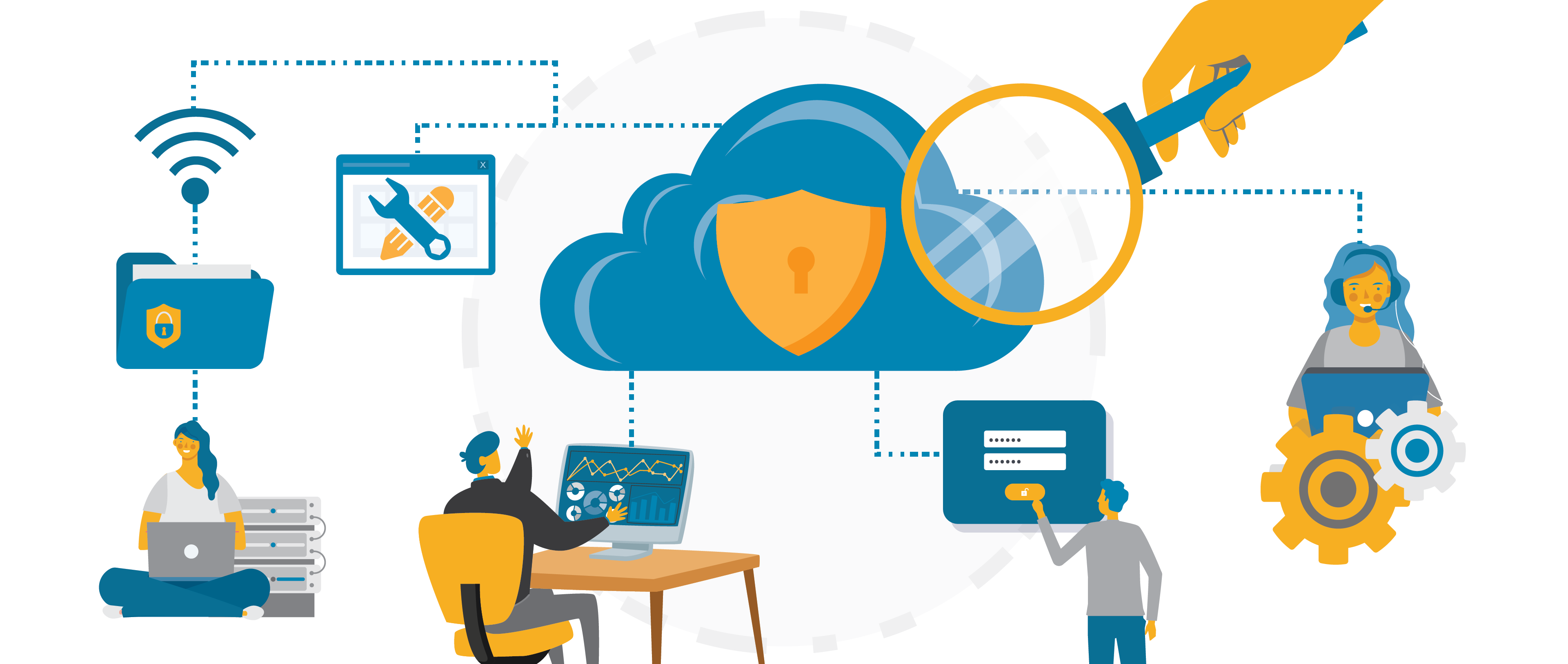In the world of mergers and acquisitions (M&A), the secure and efficient exchange of sensitive information is paramount. As companies come together to negotiate deals, they must share confidential documents, financial records, legal agreements, and intellectual property. To facilitate this process while maintaining strict confidentiality and security, a Virtual Data Room (VDR) has become an essential tool.
Here we provide an introduction to Virtual Data Rooms for M&A, explaining what they are, why they are crucial, and how they work.
What is a Virtual Data Room (VDR)?
A virtual data room (VDR) is a secure online repository used for storing and sharing sensitive and confidential documents during various business transactions, such as mergers and acquisitions (M&A), due diligence processes, financial audits, legal proceedings, and fundraising activities.
VDRs have gained popularity because they offer a more efficient and secure alternative to physical data rooms or traditional file-sharing methods.
Key features and functionalities of virtual data rooms typically include:
Secure Document Storage: VDRs provide a central location for securely storing a wide range of documents, including contracts, financial statements, legal agreements, intellectual property documents, and more. Having an online, central repository for due diligence documents has many advantages including, cost savings, enhanced security, document organization and powerful search capabilities which can expedite the due diligence process.
User Permissions: VDRs allow administrators to assign various levels of access permissions to different users, ensuring that only authorized individuals have access to specific documents. Administrators can also define what users are allowed to do with specific documents, such as print, save, copy/paste, etc.
Security: VDRs prioritize data security. They employ encryption, secure login methods, and other security measures to protect sensitive information from unauthorized access and data breaches. AES 256-bit encryption is a widely used symmetric encryption algorithm that is considered highly secure. AES stands for Advanced Encryption Standard, and was established as a federal standard for encrypting electronic data by the U.S. National Institute of Standards and Technology (NIST) in 2001. AES is a symmetric key encryption algorithm, which means the same key is used for both encryption and decryption.
AES encryption operates on blocks of data, typically 128 bits in size, and it uses a series of rounds (10 rounds for AES-128, 12 rounds for AES-192, and 14 rounds for AES-256) to transform the data using the encryption key. Each round consists of multiple mathematical operations, including substitution, permutation, and mixing, to ensure the confidentiality and integrity of the data.
Document Tracking: VDR administrators can track who has accessed specific documents and monitor their activities within the VDR, providing a digital audit trail and valuable deal intelligence.
Collaboration Tools: Many VDRs offer collaboration features, such as commenting, annotation, and version control, to facilitate communication and document editing among users.
Q&A Functionality: VDRs often include a Q&A feature that allows potential buyers or investors to ask questions and receive answers from the seller or issuer in a structured manner. Having the Q&A module within the VDR environment also enhances security.
Reporting and Analytics: VDR administrators can generate reports and analytics to gain insights into user activities and document usage. From logins to policy changes, VDRs often track more than 70 different types of user activities, so administrators can get the most precise audit trail and have complete accountability for everything that happened during the entire lifecycle of the transaction.
Accessibility: Users can access the virtual data room from anywhere with an internet connection, making it convenient for participants located in different geographical regions and time zones.
Time-Stamped Document Access: Some VDRs provide a time-stamping functionality, which records when a document was accessed and for how long, adding an additional layer of security and accountability.

Why is a Virtual Data Room Crucial for M&A?
Enhanced Security: Confidentiality is paramount in M&A deals. Virtual Data Rooms provide a high level of security to protect sensitive information from unauthorized access or leaks. They employ encryption, multi-factor authentication, and granular permissions to ensure only authorized parties can access specific documents.
Efficiency: VDRs streamline the due diligence process by allowing users to access documents remotely. This eliminates the need for physical meetings and facilitates collaboration among geographically dispersed teams, making the M&A process more efficient.
Document Tracking: Virtual Data Rooms enable administrators to track user activity. This means that owners can monitor who accessed specific documents, when they did so, and how long they spent reviewing them. This level of transparency is essential in M&A, where parties need to demonstrate compliance and diligence. Knowing where users are spending the bulk of their time in the data room also provides administrators with valuable insights into a user's interests and concerns enabling them to proactively address potential issues.
Accessibility: VDRs are accessible 24/7 from anywhere with an internet connection. This flexibility allows dealmakers, lawyers, and other stakeholders to work at their convenience, even across different time zones.
Cost Savings: Compared to physical data rooms, VDRs offer cost savings in terms of travel, printing, and courier expenses. Moreover, the time saved through streamlined processes can translate into financial benefits.
Simplified Audit Trails: VDRs create detailed audit trails, simplifying the auditing process for regulatory compliance and providing a clear record of activities for both legal and security purposes.

How Do Virtual Data Rooms Work?
Setting up the VDR: To start, a secure VDR is created by a service provider. Access controls, user permissions, and security features are configured according to the requirements of the M&A transaction.
Document Upload: The relevant documents, including financial statements, legal agreements, intellectual property records, and due diligence reports, are uploaded to the VDR by the seller or their designated administrators.
User Invitation: Authorized users, including potential buyers, lawyers, and other stakeholders, are invited to access the VDR. Each user is assigned specific permissions, determining what documents they have access to.
Document Organization: The VDR typically organizes documents into folders and categories for easy navigation. Users can search for specific documents or browse through the organized structure.
Secure Access: Users log in with their unique credentials, which may include multi-factor authentication for added security. All activities within the VDR are logged, creating a comprehensive audit trail.
Q&A and Collaboration: VDRs often feature Q&A modules where users can ask questions about the documents they are reviewing. Sellers can respond with clarifications, further enhancing the transparency of the deal.
Reporting and Analytics: VDR administrators can generate reports on user activity, document access, and other relevant data. These reports can be invaluable for evaluating the progress of the deal and ensuring compliance.
Closing and Archiving: When the M&A transaction is complete, the VDR can be closed, and all documents can be securely archived for future reference or for regulatory purposes.
How to Choose the Right VDR Provider

With a multitude of VDR providers available in the market, choosing the right one can be a daunting task. Below are some essential steps to help you select the perfect VDR provider for your specific transaction.
Assess Your Needs
Before diving into the selection process, it's helpful to have a clear understanding of your organization's specific requirements. Consider the following questions:
- What type of documents will you be storing and sharing in the VDR?
- How many users will need access to the VDR, and what are their roles and permissions?
- What level of security and compliance standards does your industry require?
- Do you need additional features like document watermarking, user tracking, or integration with other software?
Understanding your needs will serve as a solid foundation for evaluating potential VDR providers.
Security and Compliance
Security should be a top priority when choosing a VDR provider. Look for features such as end-to-end encryption, multi-factor authentication, and data backup capabilities. Ensure that the provider complies with industry-specific regulations, such as GDPR, HIPAA, or SOC 2, if applicable to your business. Additionally, inquire about the provider's data center security and disaster recovery plans to guarantee the safety of your data.
User-Friendly Interface
A user-friendly interface is essential for seamless collaboration and efficient document management. Test the VDR's user interface to ensure that it's intuitive and easy to navigate. Consider the needs of all users, from tech-savvy team members to those who may not be as technically proficient.
Accessibility and Mobility
In today's global business landscape, remote access is crucial. Ensure that the VDR provider offers compatibility with various devices and operating systems. Mobile apps and responsive web interfaces should be available for users who need to access the VDR on smartphones or tablets.
Collaboration Tools
Efficient collaboration is a key benefit of using a VDR. Look for features that facilitate document sharing, real-time commenting, and task assignment. These tools can greatly enhance productivity and streamline communication within your team or with external stakeholders.
Pricing Structure
VDR providers often offer different pricing plans based on the number of users or the amount of data storage required. Understand the pricing structure and assess how it aligns with your budget. Be cautious of hidden fees and consider the scalability of the solution as your business grows.
Customer Support and Training
Evaluate the level of customer support and training provided by the VDR provider. A responsive customer support team can help you address any issues or questions promptly. Additionally, inquire about the availability of training resources or onboarding assistance to ensure your team can make the most of the VDR.
Reputation and Reviews
Research the reputation of the VDR provider in the industry. Read customer reviews and testimonials to gain insights into the experiences of other users. A provider with a positive track record and satisfied clients is more likely to be a reliable choice.
Data Ownership and Control
Clarify the terms of data ownership and control within the VDR. Ensure that you retain ownership of your data and have the ability to export it easily if you decide to switch providers or discontinue the service.
Choosing the right Virtual Data Room provider is a critical decision that can impact your organization's security, efficiency, and collaboration capabilities. By thoroughly assessing your needs, focusing on security and compliance, considering usability and accessibility, and carefully evaluating pricing and support options, you can make an informed choice that aligns with your business objectives. Investing time in the selection process will pay off in the long run as you enjoy the benefits of a reliable and secure VDR solution.
Conducting Due Diligence with a Virtual Data Room
Conducting due diligence with a virtual data room (VDR) has become increasingly common in business transactions, such as mergers and acquisitions, fundraising, and partnerships. A VDR allows organizations to securely share and review sensitive documents and data online. Here are the steps to conduct due diligence using a virtual data room:
Select a Virtual Data Room Provider: Choose a reputable VDR provider that offers robust security features, user-friendly interface, and the necessary customization options for your specific due diligence needs. Some popular VDR providers include Intralinks, Merrill Datasite, SecureDocs and ShareVault.
Set Up the Virtual Data Room: Work with the VDR provider to set up a dedicated data room for your due diligence process. Customize the data room's structure, permissions, and access levels to align with the specific requirements of your transaction.
Upload Documents and Data: Gather all the relevant documents and data that need to be reviewed during the due diligence process. These may include financial records, legal contracts, intellectual property documents, HR records, and more. Upload these files into the virtual data room, organizing them logically into folders or categories. Some VDR platforms provide a due diligence checklist making it easy to ensure all relevant due diligence materials are provided.
Secure Access Control: Control access to the VDR by assigning permissions and user roles to participants. Typical roles include administrators, viewers, and contributors. Ensure that participants can only access the information they need and nothing more.
Implement Security Measures: Utilize the security features provided by the VDR provider, such as encryption, two-factor authentication, watermarking, and digital rights management, to protect sensitive data from unauthorized access and leaks.
Facilitate Collaboration: Enable collaboration tools within the VDR to allow participants to communicate and collaborate securely. Features like Q&A modules, comments, and task assignments can streamline the due diligence process.
Track and Monitor Activity: Regularly monitor and audit the activity within the virtual data room. Most VDRs provide activity logs and reporting features that allow you to see who accessed what information and when.
Manage Documents Efficiently: Use document version control to ensure that participants are always working with the most up-to-date information. Ensure that old versions are archived or deleted to prevent confusion.
Maintain Compliance: Ensure that your due diligence process complies with relevant regulations, such as GDPR or HIPAA, depending on the nature of the data involved. VDR providers often have compliance features to assist with this.
Prepare for Questions and Requests: Be prepared to answer questions and fulfill requests from participants. The VDR should make it easy to search for specific documents and information.
Finalize the Due Diligence Process: Once the due diligence process is complete, review the findings and finalize the transaction or deal accordingly.
Terminate Access: After the deal is concluded, revoke access to the virtual data room for all participants to ensure data security.
Archive and Retain Data: Depending on your legal and regulatory requirements, archive and retain the data from the virtual data room for a specified period, typically in a secure and compliant manner.
By following these steps and leveraging the capabilities of a virtual data room, you can conduct due diligence efficiently and securely while maintaining control over sensitive information throughout the process.
Virtual Data Rooms have revolutionized the M&A landscape by providing a secure, efficient, and cost-effective means of sharing sensitive information. They enhance security, streamline the due diligence process, and offer valuable insights through detailed tracking and reporting. As M&A transactions continue to grow in complexity and volume, Virtual Data Rooms will remain an indispensable tool for dealmakers seeking to navigate these challenges while safeguarding their confidential information.
ShareVault has been providing organizations of all types and sizes with secure document-sharing solutions for over 15 years.
